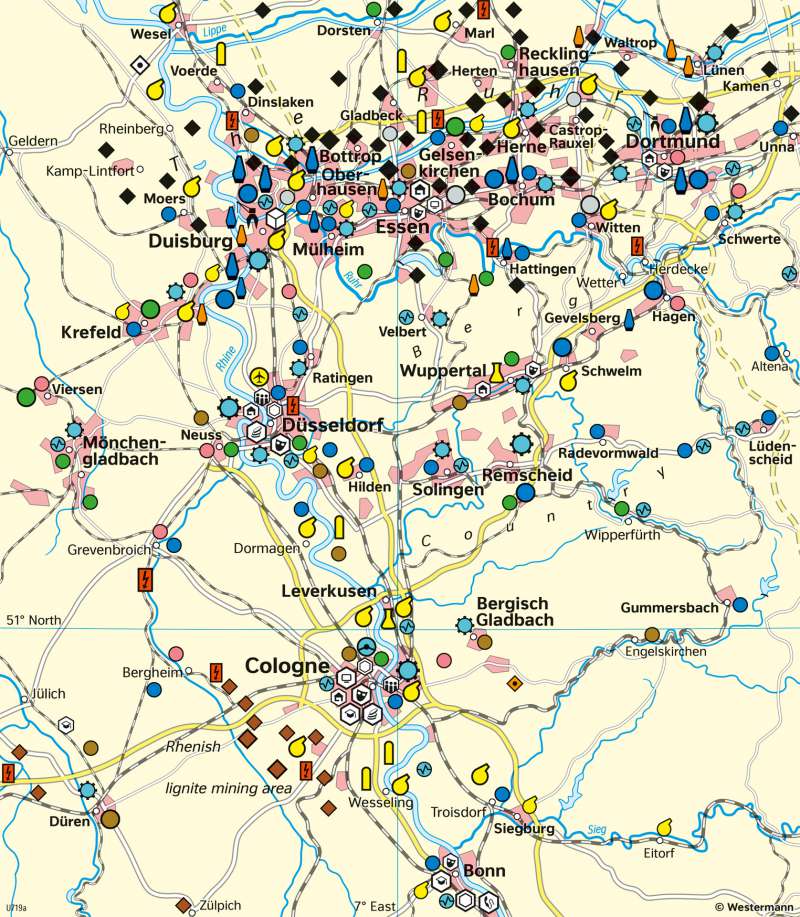Rhine-Ruhr Metropolitan Region - Structural change
Physical map and the Rhine-Ruhr region
978-3-14-100890-6 | Page 95 | Ill. 2

Overview
Due to decades of focussing on mining, iron and steel industry, the Ruhr region had to face a profound structural change from the 1960s and 1970s onwards. This process of adjustment continues to this day. The former key industries have completely (coal mining) or partially (steel industry) lost their importance.
Although global hard coal production has risen sharply in the last five decades, the share of Ruhr coal declined drastically. In 1955, about eight per cent of global production was mined here; today its share is vanishingly small. Because in 2006 the German government decided to phase out highly subsidised coal mining, the last mine was closed in 2018. The sites for pig iron and steel production have also been massively reduced. Today, they are almost entirely located in the Duisburg area in the immediate vicinity of the Rhine (raw materials are sourced from overseas by ship, products are transported away via the Duisport logistics hub).
Structural change in the Ruhr
While around 500,000 jobs were lost in the manufacturing sector in the Ruhr region between 1980 and 2000 alone, there was continuous growth in the service sector. Logistics and trade, for example, have become defining new industries in the region. In the mid-1980s, more than half of the workforce was employed in the service sector for the first time, and its share has been steadily increasing ever since. Today, more than 80 percent are employed in the tertiary sector. Moreover, small and medium-sised enterprises are expanding. While several large companies with which structural change was initially closely linked (for example Opel and Nokia) have closed their sites, the Kommunalverband Ruhr has been able to register numerous start-ups in the fields of energy, environmental, information and communication technology, medicine, microelectronics, logistics and materials technology since 2000.
Establishing new technology centres and research institutes was an important step on the way from an industrial to a knowledge location. Since 1961, several universities have been founded in the Ruhr region, such as the universities of Bochum, Dortmund, Essen, Duisburg - the latter merged into the University of Duisburg-Essen in 2003 - the University of Hagen and the private university of Witten/Herdecke. Thanks to numerous music and dance stages, cultural festivals and museums, the Ruhr region has also developed into an important cultural area.
Large sums have been invested in preserving industrial monuments or putting them to new uses. A good 50 of these relics form the "Industrial Heritage Trail". The Jahrhunderthalle Bochum, a cultural venue of national importance, was built in the gas power station of a former steelworks in Bochum, the Duisburg-Meiderich Ironworks was turned into the Duisburg-Nord Landschaftspark, the Gasometer in Oberhausen serves as an exhibition hall, and the Zollverein Essen industrial complex has been a UNESCO World Heritage Site since 2002. Measures like these have massively contributed to the development of tourism in the region.




